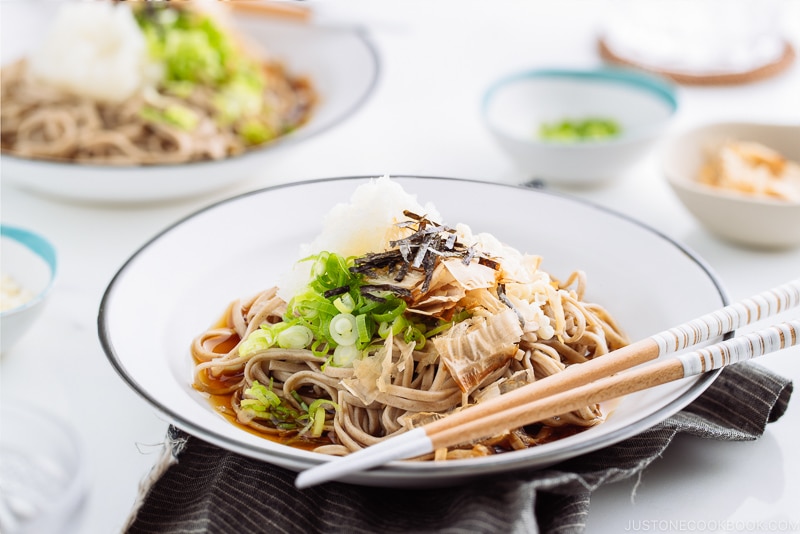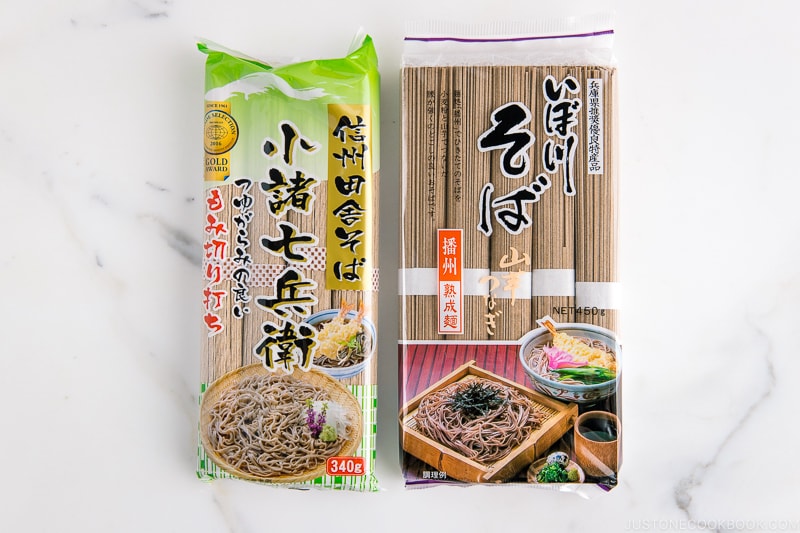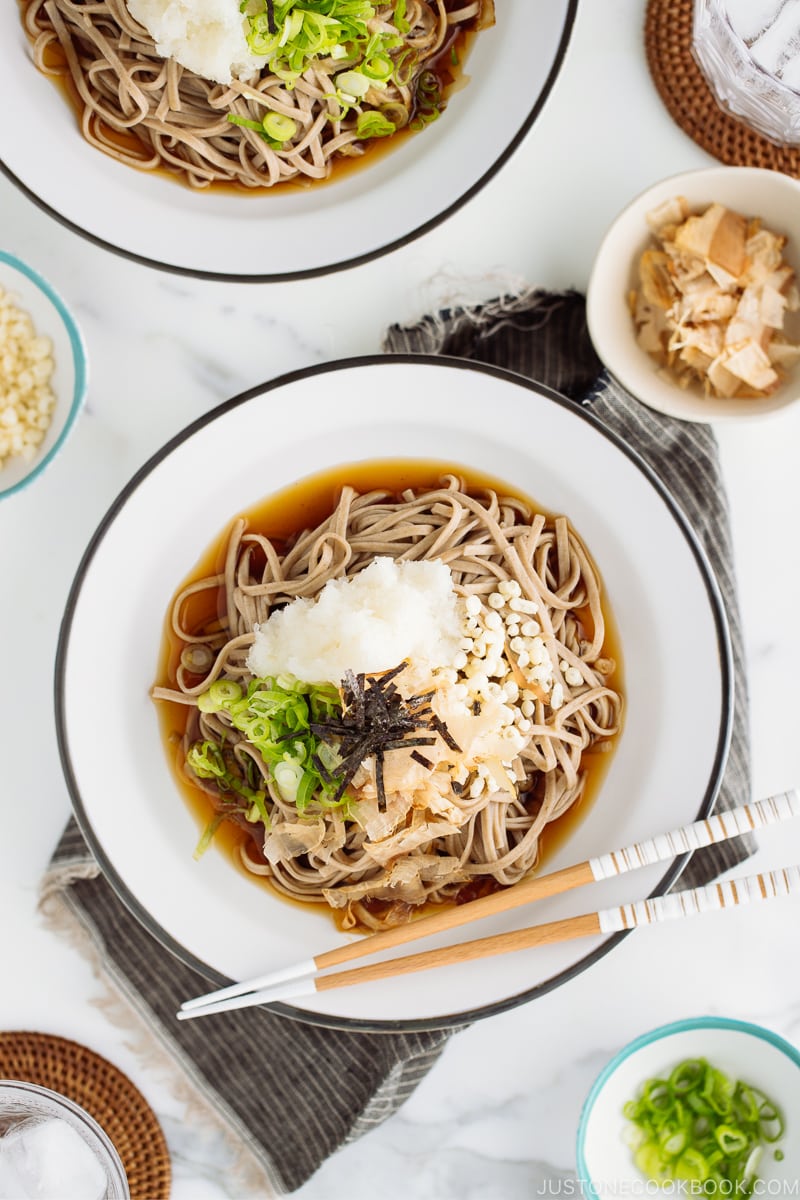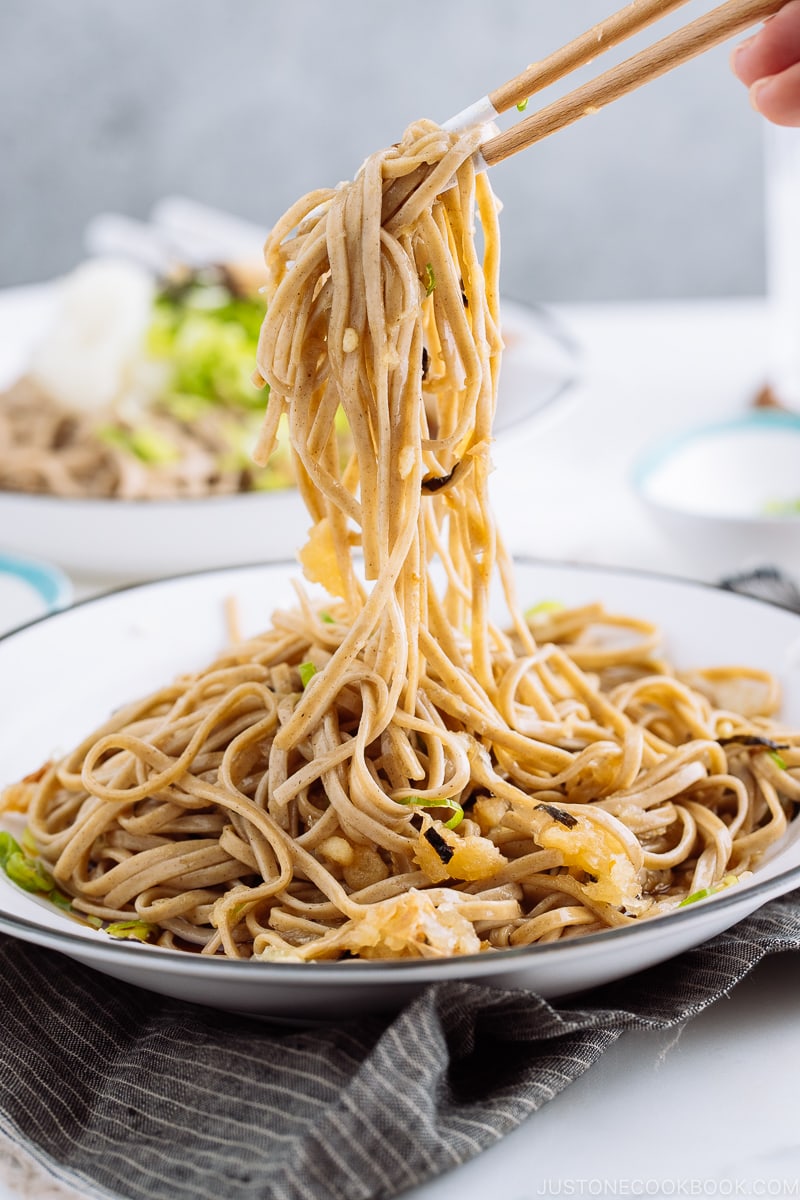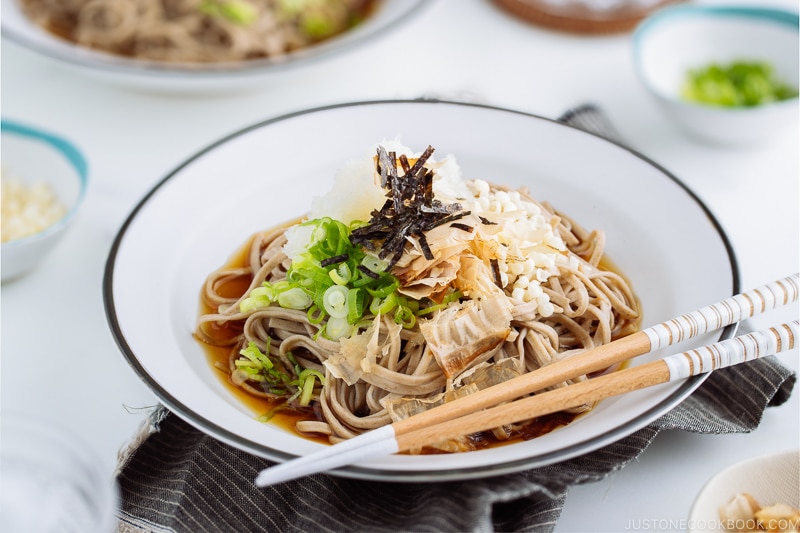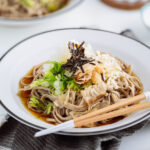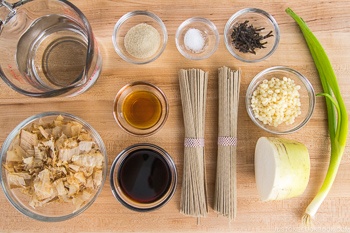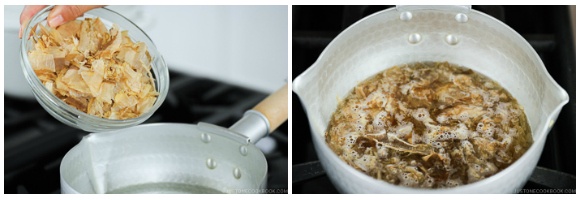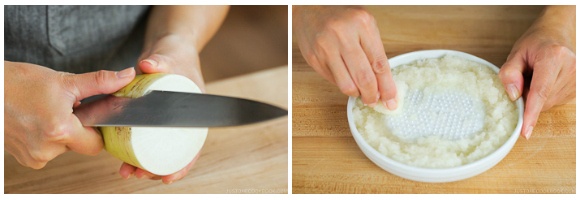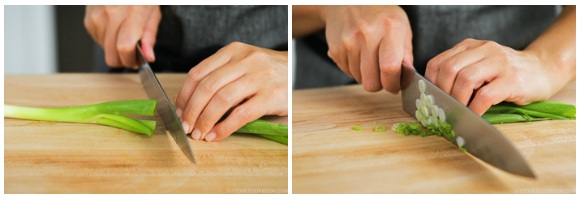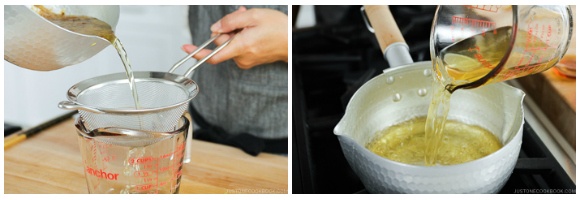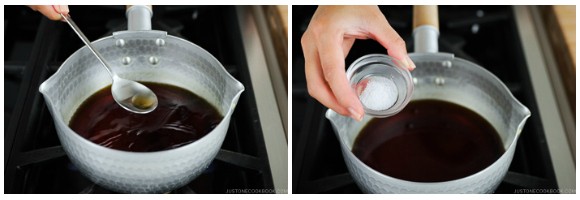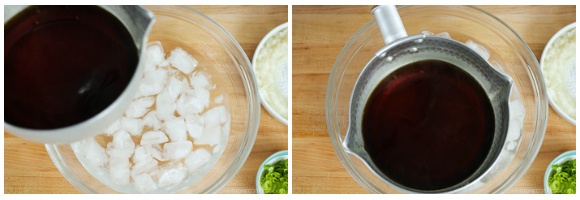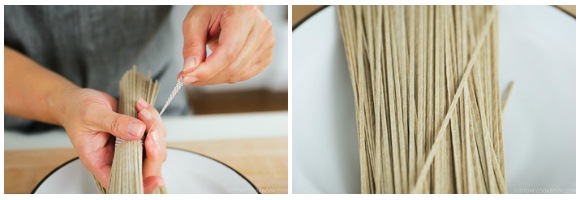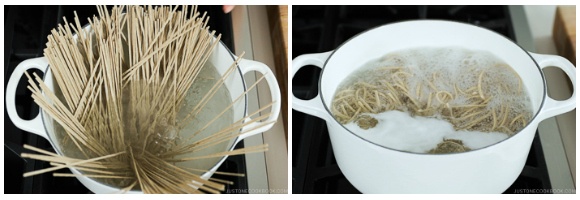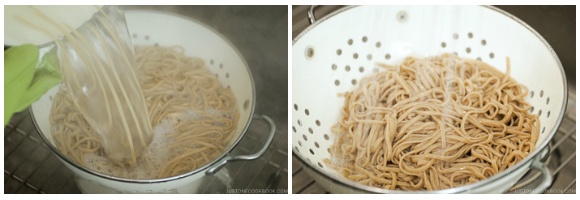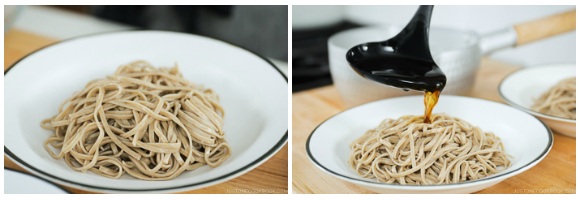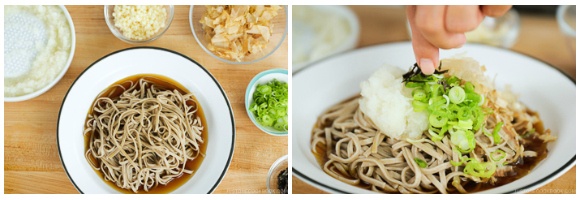Everyone needs a quick meal that is fresh, nutritious, and delicious. Oroshi Soba (おろし蕎麦) meets exactly the criteria when I need to cook up a healthy meal fast for the family. It uses basic Japanese ingredients like dried soba noodles, dried bonito flakes, scallion, and daikon radish. When you’re in a hurry, but still want something simple yet satisfying, Oroshi Soba is a recipe you can call on.
What is Oroshi Soba?
Oroshi Soba (おろし蕎麦) literally means “grated daikon buckwheat noodles.” It’s one of the popular soba noodle menus that you can find at noodle shops in Japan and it’s served hot or cold. The signature of this dish is the grated daikon on top of the noodles. Many of you probably already know “soba” is a Japanese name for buckwheat noodles. If you’re not sure what is soba or what’s the difference between soba and udon noodles, you can read more here. Now, “oroshi” means daikon oroshi (大根おろし), which is grated daikon in Japanese. Grated daikon gives a refreshing texture as well as a bit of spicy kick to the dish. We often serve grated daikon with deep-fried foods to lighten the dish. Some of the signature grated daikon dishes include Saikoro Steak, Shrimp Tempura, and Vegetable Tempura, Agedashi Tofu, Tamagoyaki, and Wafu Hambagu.
Where to Get the Best Soba Noodles
Once in a while, I get a question about my favorite brand of soba. To be honest, I didn’t particularly have one until since soba brands are pretty limited here in the U.S. (or outside of Japan in general). However, I was recently introduced to Shinshu Inaka Soba – Komoro Shichibei (信州田舎そば 小諸七兵衛) by Hoshino Bussan (星野物産). The noodles are a little bit wavy with a nice earthy flavor, and they have the absorbency to soak up the dipping sauce very well. Unlike some soba noodles that tend to develop a mushy, starchy exterior, Shinshu Inaka Soba has a remarkable good bite that stands out immediately. Luckily my local Japanese grocery store Nijiya Market started carrying this brand. If you spot this soba noodle at your local Japanese grocery store next time, grab one and give it a try.
The Key Ingredient – Katsuo Dashi
For a simple recipe like this with minimal ingredients, it’s important to bring out the flavor from each ingredient. Here I used Katsuo Dashi (鰹だし)—Japanese soup stock made with dried bonito flakes. The intensity of katsuo dashi and the additional bonito flakes sprinkled on top provide lots of umami to this simple noodle dish. It’s very easy to make Katsuo Dashi. You can make a big batch and use some of it to make miso soup for another meal.
How to Make It Vegetarian-Friendly
If you’re vegetarian or vegan, don’t worry. You can make the Japanese soup stock with umami-rich kombu or edible kelp. Kombu Dashi is also very easy to make. The key to extracting good flavor is to slowly bring the kombu to simmer on low heat, which allows the kombu to steep for a longer time.
Echizen Oroshi Soba – Fukui Regional Dish
While I was researching online about typical Oroshi Soba in Japan, I learned that it is actually a regional dish in Fukui prefecture, located on the Japan Sea coast in the Chubu region of central Japan. I have never been to Fukui prefecture before, but Fukui prefecture which used to be called “Echizen” has the prefectural “representative food” called Echizen Oroshi Soba (越前おろしそば). For Echizen Oroshi Soba, the soba noodles are handmade using local buckwheat, and the grated daikon is added to the dashi-based soup (In my recipe, I placed the grated daikon on top of the noodles). Before you eat, you would pour the chilled dashi soup containing grated daikon over the soba noodles. The toppings are simple and similar to my recipe – katsuobushi and chopped scallion. What they focus on is the quality of soba noodles, the refreshing yet spicy daikon, and freshly shaved quality bonito flakes. It is a minimalist dish that allows each ingredient to shine. Wish to learn more about Japanese cooking? Sign up for our free newsletter to receive cooking tips & recipe updates! And stay in touch with me on Facebook, Pinterest, YouTube, and Instagram.

